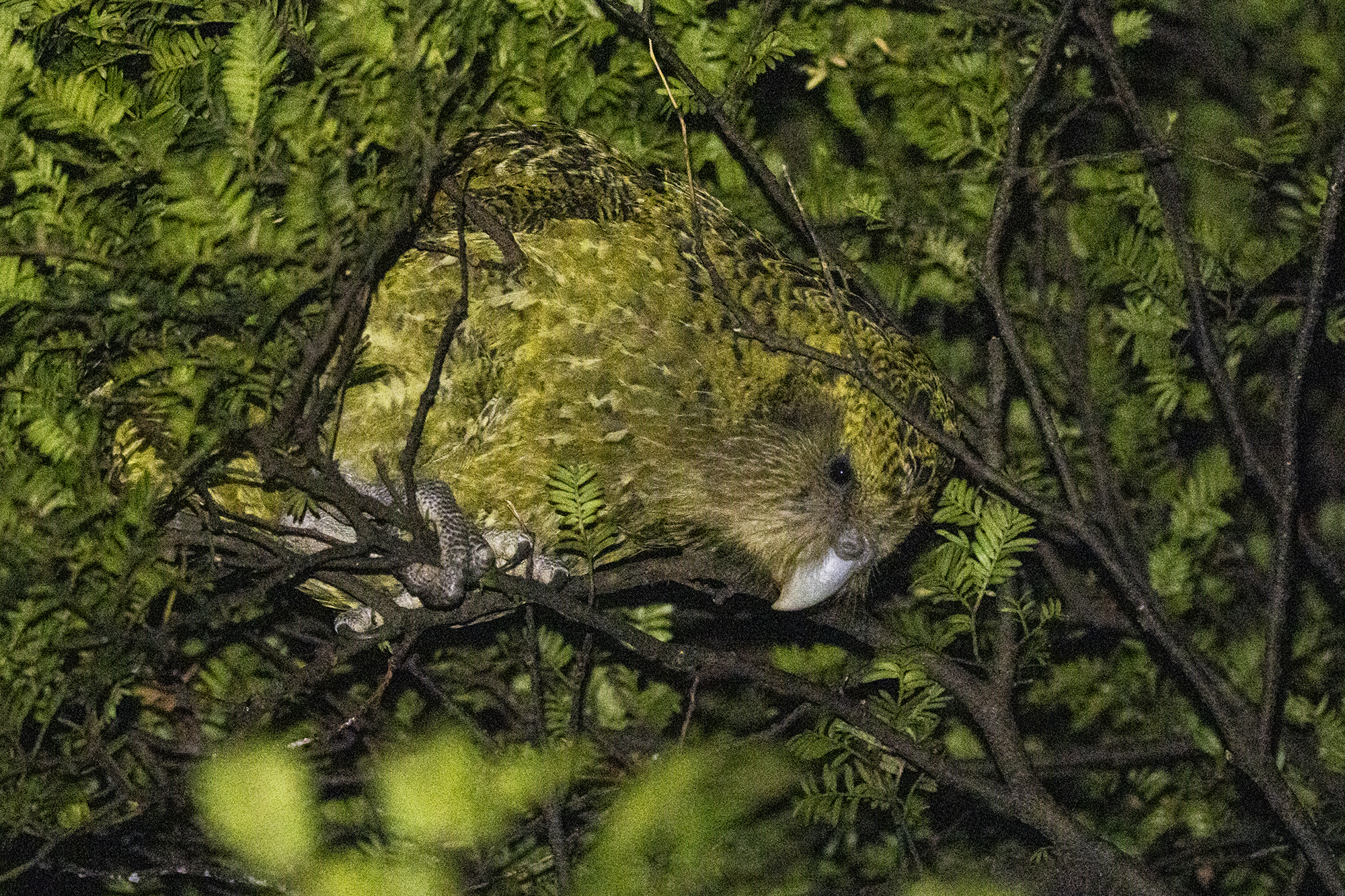Media release
From:
Spare a thought for parasites: a 1000-year study of kākāpō poo
Parasites are – naturally – unpopular. They don’t get good PR. They give people the “ick”. Their passing is rarely mourned – but perhaps it should be.
In a new study of fossilised and frozen kākāpō poo, researchers from Manaaki Whenua - Landcare Research have, for the first time, been able to show what happens to parasites when their host – almost – goes extinct.
Despite public perception, parasites are vital components of ecosystems. Parasites are now thought to be fundamental to creating and supporting high levels of biodiversity, as they prevent single species from becoming dominant. Further, many parasites have complex life cycles that involve several hosts, and they cannot survive unless these hosts interact (e.g., predators and prey). The myriad and fantastical ways in which parasites facilitate these interactions may be so numerous that ecological food webs may in fact heavily depend on parasites to function properly.
Furthermore, parasites and their hosts often have deeply interwoven evolutionary histories. Parasites - excluding “parasitoids” which deliberately kill their hosts – usually want to ensure their hosts survive, and their hosts have likewise had a long time to develop defences to prevent them from becoming destructive. Thus, removing these “natural” parasites can have severe consequences. For example, hosts can now be easily colonised by new and exotic parasites, that may be deadly to them.
Parasites are also extremely numerous and successful, yet untold numbers of parasites may be going extinct as their own hosts decline or disappear. It has long been suspected that if a host goes extinct, then many of its parasites disappear too. However, it is totally unknown whether parasites go extinct before their hosts do. Or, whether endangered species may have also lost parasites at some point during their decline.
Answering this question has proved almost impossible, as parasites are almost never preserved in fossil deposits, or described prior to their extinction. However, researchers led by Alex Boast at Manaaki Whenua - Landcare Research were able to overcome this problem by using a unique fecal record of the critically endangered kākāpō (Strigops habroptila), and piece together what has happened to their gut parasites over time.
The kākāpō has undergone one of the most intensive species recovery efforts in the world and faced near-extinction due to human activities and introduced predators, with only 51 individuals recorded between 1995 and 1996 and fewer than 250 surviving today in managed sanctuaries.
The scat and coprolite record spans more than 1000 years, culminating in the near extinction of the kākāpō (c. 1280–1990 AD) and its full population management in predator-free reserves from c. 1990 onward.
Co-author Janet Wilmshurst explains why this record is so unique and important:
“Very few living species have coprolite records, or have had their dung collected and frozen during their conservation. Kākāpō have both, meaning they may the only species in the world to have their parasite communities preserved across the entirety of their decline, and their ongoing recovery”
Ancient DNA metabarcoding and microfossil data on more than 200 scats and coprolites, from 14 localities, revealed a loss of parasite richness over time.
Thirteen of the 16 (81.3%) parasite taxa detected in pre-1990 samples are absent from parasite populations in kākāpō today, with nine losses occurring before, and four after, the full management period began.
Parasite decline continued after the kākāpō were saved from near-extinction, suggesting that population declines, as well as extinctions, will result in permanent parasite loss.
Lead author Alex Boast was surprised at the level of parasite loss:
“The level of parasite loss in kākāpō was greater than we had expected, and very few parasite species were found both pre-human and modern kākāpō populations. Thus, it seems that endangered species everywhere may have possess fractions of their original parasite communities.”
Parasite extinctions may be far more common than we know, with as-yet unknown impacts on the health of their hosts and their wider ecosystems.
Dr Andrew Digby, Science Advisor for Kākāpō/Takahē in the Department of Conservation’s Kākāpō Recovery Programme acknowledged the importance of the research findings, stating: “Kākāpō are one of New Zealand’s most endangered species. However, this study shows that that some of the parasites inhabiting kākāpō may be even more endangered than their host. This study emphasises just how important evidence from the past can be for informing conservation biology.”



 Australia; New Zealand; SA
Australia; New Zealand; SA



